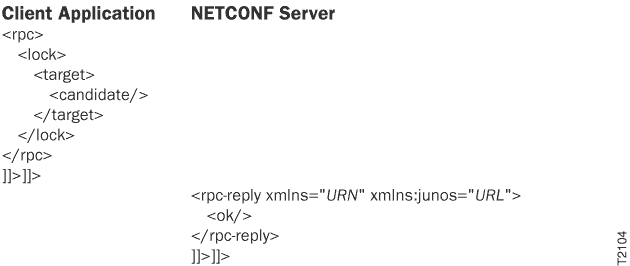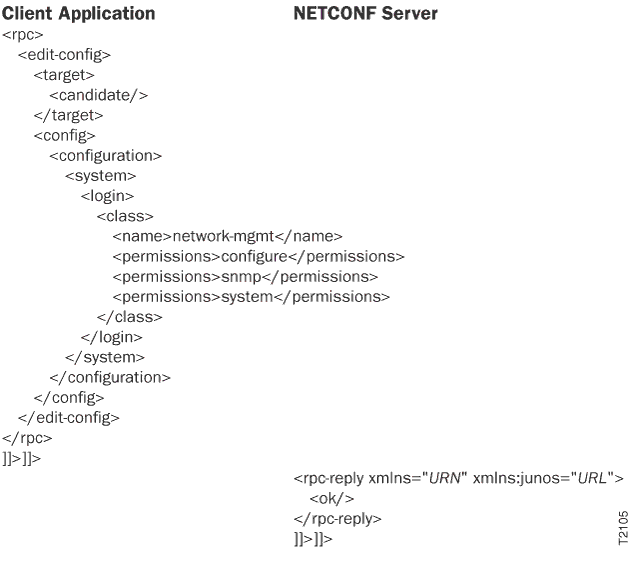Sample NETCONF Session
The following sections describe the sequence of tag elements in a sample NETCONF session with a device running Junos OS. The client application begins by establishing a connection to a NETCONF server.
Exchanging Initialization Tag Elements
After the client application establishes a connection to a NETCONF server, the two
exchange <hello> tag elements, as shown in the following
example. For legibility, the example places the client application’s
<hello> tag element below the NETCONF server’s. The
two parties can actually emit their <hello> tag elements
at the same time. For information about the ]]>]]>
character sequence used in this and the following examples, see Generate Well-Formed XML Documents. For a detailed discussion of the <hello> tag element,
see Start a NETCONF Session.

Sending an Operational Request
The client application emits the <get-chassis-inventory> tag element to request information about the device’s chassis
hardware. The NETCONF server returns the requested information in
the <chassis-inventory> tag element.

Locking the Configuration
The client application then prepares to incorporate a change into the candidate
configuration by emitting the <lock/> tag to prevent any
other users or applications from altering the candidate configuration at the
same time. To confirm that the candidate configuration is locked, the NETCONF
server returns an <ok/> tag in an
<rpc-reply> tag element.

Changing the Configuration
The client application now emits tag elements to create a new
Junos OS login class called network-mgmt at the [edit system login class] hierarchy level in the candidate configuration. To confirm that
the load operation was successful, the NETCONF server returns an <ok/> tag in an <rpc-reply> tag element.

Committing the Configuration
The client application then commits the candidate configuration. To confirm that the
commit operation was successful, the NETCONF server returns an
<ok/> tag in an <rpc-reply>
tag element.

Unlocking the Configuration
The client application unlocks (and by implication closes) the candidate configuration.
To confirm that the unlock operation was successful, the NETCONF server returns
an <ok/> tag in an <rpc-reply> tag
element.

Closing the NETCONF Session
The client application closes the NETCONF session by emitting the
<close-session> tag.

